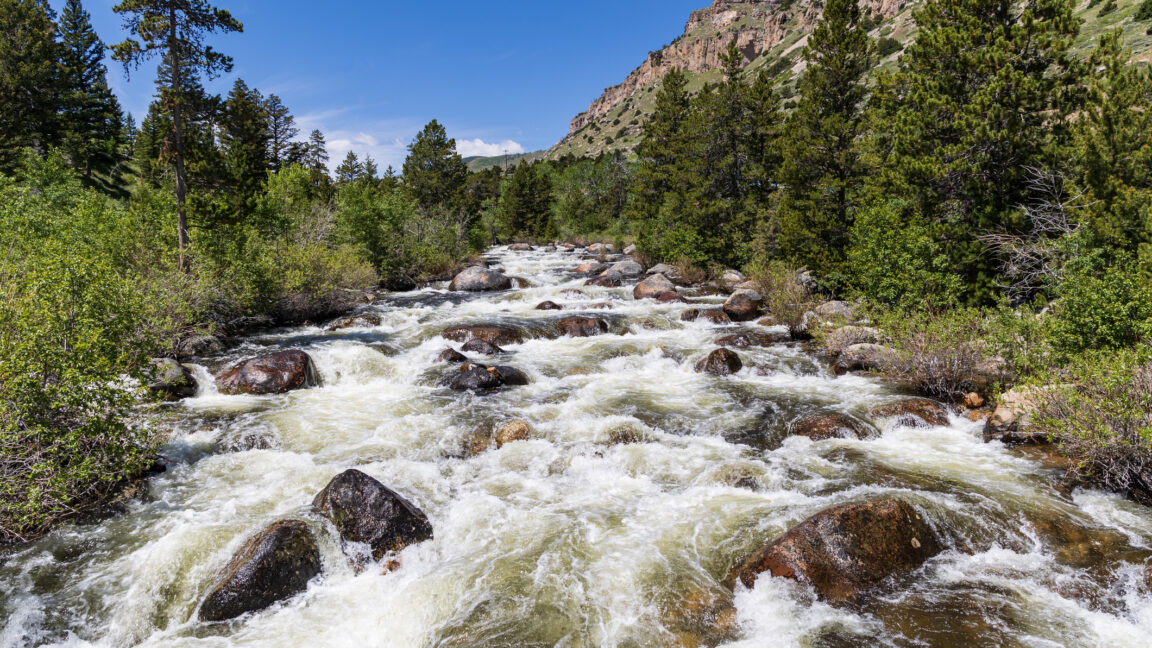As the Popo Agie river wends its way down from the glaciers atop Wyoming’s Wind River Mountains toward the city of Lander, it flows into a limestone cave and disappears. The formation, known as the Sinks, spits the river back out at another feature called the Rise a quarter of a mile east, a little more voluminous and a little warmer, with brown and rainbow trout weighing as much as 10 pounds mingling in its now smooth pools. The quarter-mile journey from the Sinks to the Rise takes the river two hours.
Scientists first discovered this quirk of the middle fork of the Popo Agie (pronounced puh-po zuh) in 1983 by pouring red dye into the river upstream and waiting for it to resurface. Geologists attribute the river’s mysterious delay to the water passing through exceedingly small crevasses in the rock that slow its flow.
Like many rivers in the arid West, the Popo Agie is an important aquifer. Ranchers, farmers, businesses and recreationists rely on detailed data about it—especially day-to-day streamflow measurements. That’s exactly the type of empirical information collected by the National Oceanic and Atmospheric Administration (NOAA).




